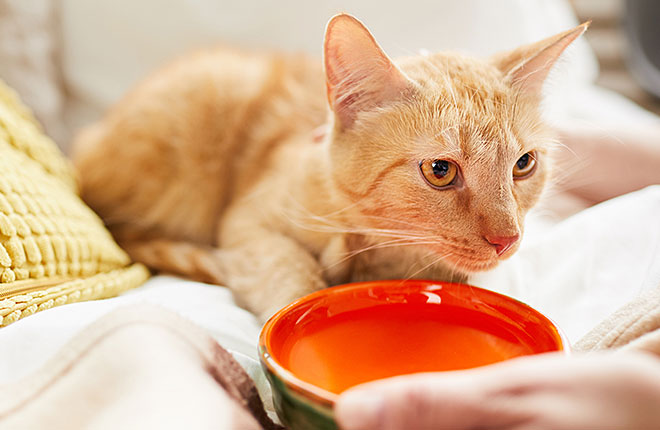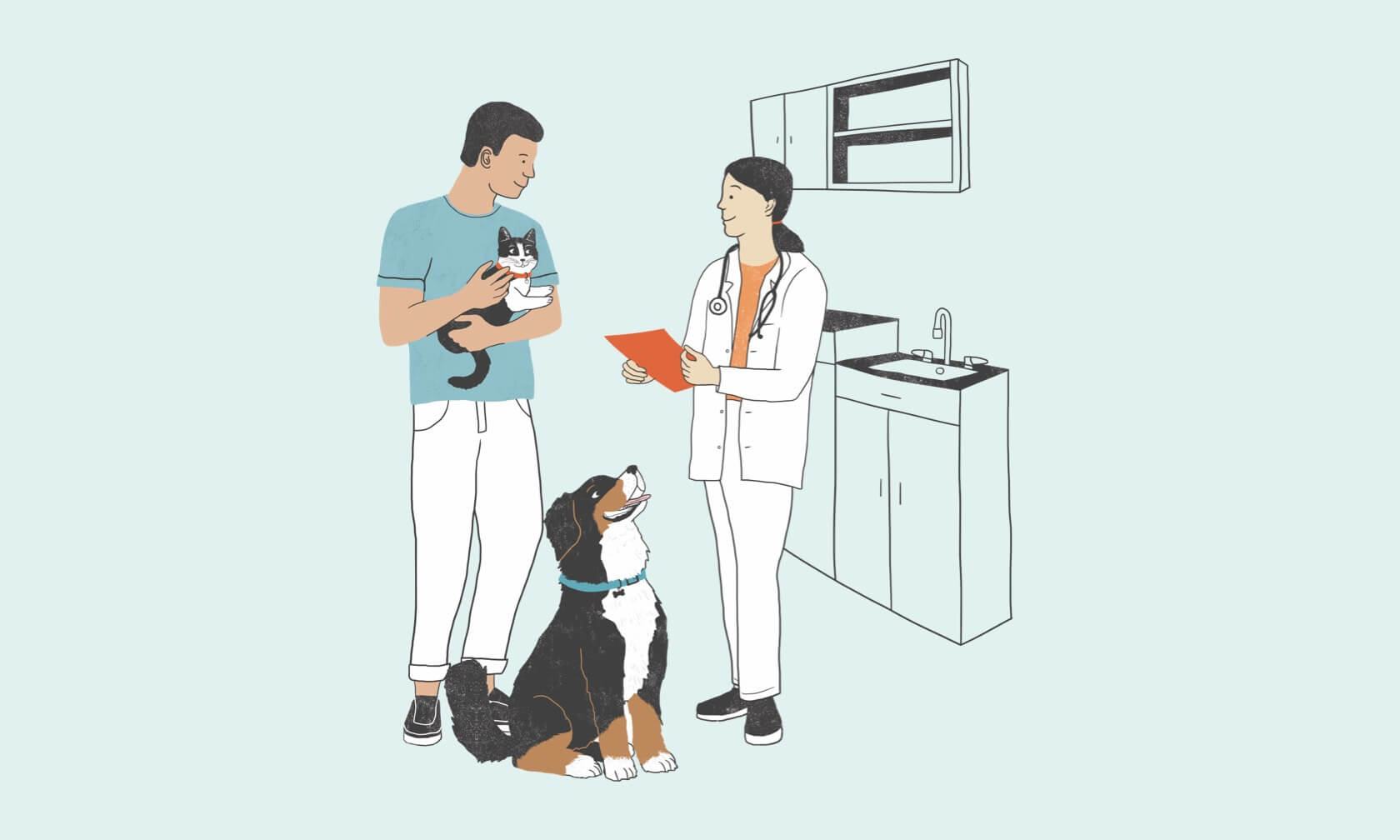Hyperthyroidism (also referred to as hyperthyroid disease) is the most common feline endocrine disorder, usually found in cats over 8 years old.1 The disease is due to the overproduction of thyroid hormones, which results in an increase of overall body metabolism. This can impact your cat’s quality of life and is associated with a number of complications if left untreated, such as heart disease and hypertension. It is important to be educated on the signs and have your cat examined regularly with your veterinarian.
Causes of Hyperthyroidism in Cats
In cats with hyperthyroidism, the thyroid glands are continuously producing and releasing hormones. This constant production of thyroid hormones is usually due to a benign tumor on one or both thyroid glands. In very rare cases, a malignant tumor is the cause of hyperthyroidism.1
The rise in thyroid hormones impacts every system in the body, and can cause complications to the kidneys, heart, skin, and gastrointestinal system.
Symptoms of Hyperthyroidism in Cats
Cats with hyperthyroidism often display one or more of the following symptoms:
- Weight loss despite normal or increased appetite (most common)
- Increased appetite
- Increased thirst
- Increased urination – frequency and volume
- Vomiting and/or diarrhea
- Decreased grooming activity
- Poor or dull hair coat
- Behavior changes, hyperactivity, nervousness
However, in early disease stages, clinical signs may be subtle enough to be missed by both the owner and veterinarian. Therefore, routine thyroid screening may be recommended by your veterinarian.1 Even if many of the above signs are noticed at home, a true diagnosis of hyperthyroidism requires confirmation by laboratory testing with your veterinarian.

Diagnosing hyperthyroidism in cats
Your veterinarian may recommend some of the following diagnostic tests.
- T4 blood test - A higher than normal level of T4 (thyroxine) is consistent with hyperthyroidism. In some instances, additional thyroid testing will be required.
- Chemistry panel - A full blood panel is required to screen for other diseases, such as concurrent liver and/or kidney injury or disease.
- Complete blood count (CBC) - A complete blood count evaluates blood cell counts for anemia (low red blood cell count), inflammation, infection, and platelets.
- Urinalysis - This test examines the urine for concurrent kidney disease and infection.
- Systemic blood pressure measurement - Hypertension is common and must be assessed initially and during treatment.
An electrocardiogram and/or echocardiography may also be recommended if a heart murmur is present.
Treating Hyperthyroidism in Cats
Cats diagnosed with hyperthyroidism must be treated to restore normal thyroid function and alleviate side effects.2 The good news is that hyperthyroidism can be treated successfully. Your veterinarian will discuss the advantages and disadvantages of each treatment and recommend the option that is best for your cat. Four choices for treatment include:1
Medication
A daily medication may be prescribed to control the production of the thyroid hormone. If your cat receives medication, follow-up T4 testing will be required until their thyroid level returns to normal. Once regulated, your cat will need periodic T4 testing to ensure no medication adjustments are necessary.
Prescription Diet
A prescription diet that restricts iodine can be exclusively fed to your cat. No other food or treats can be given to your cat for successful treatment. Your veterinarian will recommend regular monitoring of T4 levels and may also recommend monitoring kidney function and blood pressure.
Surgery
Surgical removal of the thyroid gland itself.
Radioactive Iodine Therapy (I131)
The thyroid tissue is selectively destroyed by radioactive iodine. If your cat undergoes surgery or radioactive iodine therapy, T4 testing will be conducted shortly after the procedure to ensure the treatment was successful. Your cat will need regular T4 testing to ensure the thyroid tissue does not re-grow.
Regular thyroid disease testing is highly recommended, and it is important to pay close attention to your cat’s physical and behavioral changes as they age. Remember to bring any noticeable changes to your veterinarian’s attention so they can perform the proper diagnostic tests.
ZPC-00534R1
- Scott-Moncrieff, JC. (2015). Canine and Feline Endocrinology, 4, 136-195
- Carney, HC. (2016). 2016 AAFP Guidelines for the Management of Feline Hyperthyroidism. Journal of Feline Medicine and Surgery, 18, 400-416
- Peterson, M. (2012). Hyperthyroidism in cats: what’s causing this epidemic of thyroid disease and can we prevent it? Journal of Feline Medicine and Surgery, 14, 804-818



